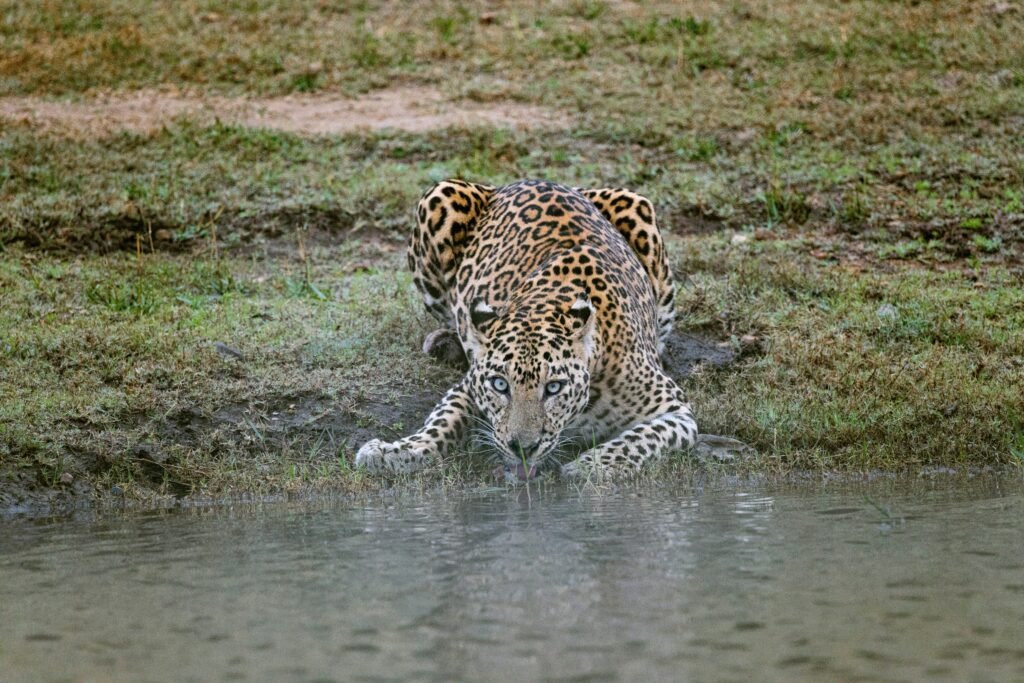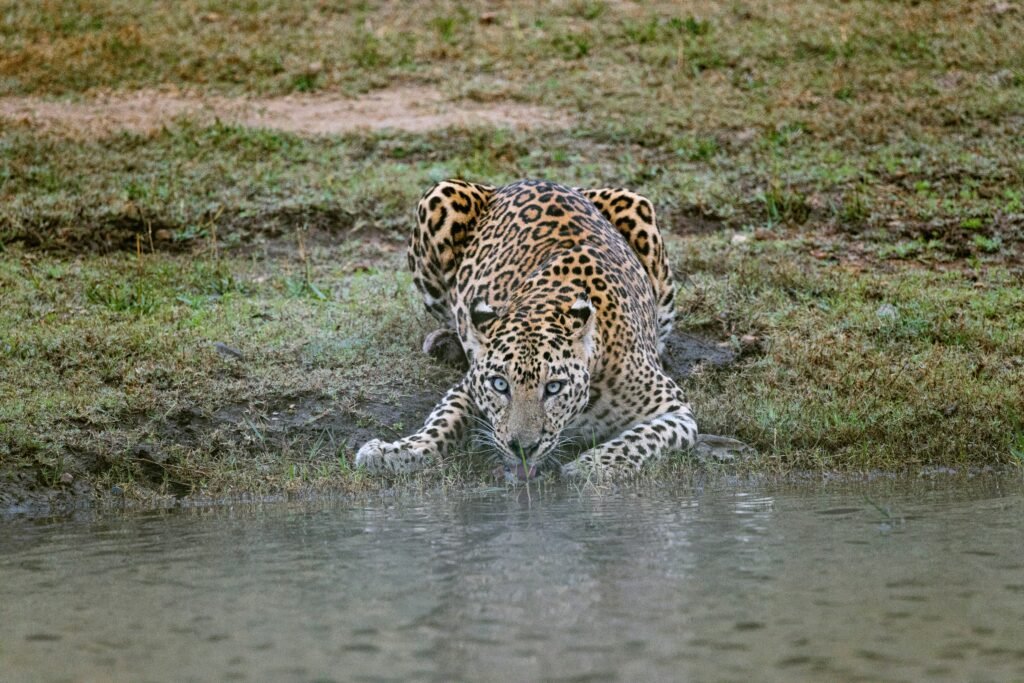Introduction: The Fascination with Felines
The relationship between humans and cats is a remarkable testament to the complexities of companionship and nature. Cats have been domesticated for thousands of years, yet they retain many traits of their wild ancestors. This duality fascinates pet owners and animal enthusiasts alike, as these small creatures can embody both affection and instinctual prowess. The domestic cat, often seen as a companion in homes around the world, hides an enigmatic aspect: their inherent skill as hunters.
Despite being cherished as affectionate pets, cats maintain a predatory grace that is often overlooked. This intriguing contradiction is a crucial aspect of their identity. Domestic cats, specifically, have evolved alongside humans, allowing them to thrive in various environments while still embodying the ferocity of their wild counterparts. As beloved family members, they provide comfort and companionship, yet their natural instincts drive them to stalk and hunt, sometimes to the detriment of local wildlife.
The fascination extends beyond mere aesthetics; understanding these creatures enables us to appreciate their role in the ecosystem. As skilled hunters, they contribute to controlling pests like rodents, yet their predation can have significant impacts on bird populations. This paradox becomes a point of discussion in understanding human responsibility towards cats and their influence on biodiversity. Delving deeper into the intricate world of cats is essential, as it provides insights into not only their behaviors but also the ethical implications of keeping such proficient hunters in domestic settings.
This exploration reveals the layers of complexity embedded within the feline character. Cats evoke both affection and intrigue in equal measure, making it essential to consider their nature and role carefully. By examining the duality of their behavior, we can ultimately gain a richer perspective on our relationship with these adorable yet remorseless creatures.
The Evolution of Cats: From Wild to Domesticated
Feline evolution began approximately 10 million years ago, tracing back to their common ancestor, a carnivorous mammal known as the Miacis. As these early creatures adapted to various environments, they developed key traits that favored survival and hunting. The modern domestic cat, Felis catus, is primarily descended from the African wildcat (Felis silvestris lybica), which began to associate with humans around 9,000 years ago, primarily for the purpose of controlling rodent populations in agricultural settings.
One of the critical adaptations that enhanced the cat’s effectiveness as a hunter is its surgical precision and agility. Cats possess a refined muscular structure and flexible spine, enabling them to execute impressive jumps and pounces. Their retractable claws and sharp teeth further contribute to their prowess, allowing them to capture and subdue prey efficiently. Additionally, their keen senses, especially their acute hearing and night vision, allow them to thrive in low-light conditions, making them formidable nocturnal predators.
As cats transitioned from wild hunters to domestic companions, important behavioral changes occurred. Early interactions with humans likely facilitated a shift towards social behavior, as cats learned to coexist with people and leverage their companionship for mutual benefit. Unlike dogs, which were actively bred for specific traits, cats largely underwent self-domestication—choosing to live alongside humans based on the availability of food and protection.
Over time, the bond between humans and cats evolved, leading to the diverse array of cat breeds we see today. These breeds exhibit varying physical traits, temperaments, and behaviors, yet all share inherited characteristics from their formidable ancestors. This intricate evolution showcases how cats have maintained their hunting abilities while adapting to a lifestyle alongside humans, which showcases the delicate balance between their wild instincts and domestic life.

Killing Skills: What Makes Cats Effective Predators
Cats, often perceived as house pets, are fundamentally equipped with a suite of anatomical and physiological traits that render them extraordinarily effective predators. One of the most striking features is their sharp, retractable claws. These claws serve a dual purpose: they allow cats to climb and navigate varied terrains with ease while providing a vital weapon during hunting. When extended, these claws can latch onto prey and deliver lethal control and precision.
In addition to their formidable claws, cats boast acute sensory capabilities. Their vision is particularly adapted for low-light conditions, allowing them to spot movement in dim environments. This nocturnal advantage positions them as proficient hunters during twilight hours, when many of their prey are active. Moreover, cats possess an exceptional sense of hearing, capable of detecting high-frequency sounds that are inaudible to humans. This heightened auditory perception assists them significantly in locating small animals, often conveying a distinct advantage while stalking their prey.
Stealth is another quintessential aspect of a cat’s hunting prowess. Their unique body structure allows for silent movements, thanks to padded feet that muffle sound. As a result, cats can approach their prey without alerting them, maximizing the likelihood of a successful hunt. This stealthy approach is complemented by their hunting techniques, which vary by species but frequently incorporate ambush tactics. In the wild, they often lie in wait, using their camouflaged fur to blend into the environment before launching a surprising attack.
Even in domesticated settings, many of these instinctual behaviors manifest. House cats will exhibit pouncing and stalking behaviors, demonstrating the inherent predatory skills that drive them. The synthesis of sharp claws, acute senses, and stealthy movements establishes a complex framework that underpins a cat’s effectiveness as a predator, revealing why they are often considered adorable yet remorseless killing machines in their realms.
The Role of Instinct: Nature vs. Nurture in Hunting Behavior
The hunting behavior of felines, particularly domestic cats, has long been a subject of intrigue among researchers and pet owners alike. While instinct plays a vital role in these behaviors, environmental factors and socialization contribute significantly to a cat’s hunting prowess. Studies indicate that the predatory instincts of cats are deeply embedded in their DNA, allowing even the most pampered felines to exhibit hunting behaviors despite their domestication.
Instinctive behaviors in cats, such as stalking, pouncing, and capturing prey, are often observed from an early age. Kittens, even without parental guidance, will engage in hunting-related play, demonstrating an innate predisposition toward these activities. This suggests that nature equips cats with the necessary skills to hunt. However, the role of nurture in honing these instincts cannot be underestimated. The environment in which a cat is raised significantly influences its hunting behavior, leading to variations among individual cats.
Recent studies have highlighted that cats raised in stimulating environments that encourage exploration and play exhibit more refined hunting techniques. Conversely, those raised in less interactive settings may not develop these skills to the same extent, indicating that while instinct lays the groundwork, environmental factors often refine and enhance hunting abilities. Furthermore, socialization plays a crucial role in shaping a cat’s hunting habits. Interactions with littermates and knowledgeable adult cats can provide valuable lessons in stalking and capturing prey, reinforcing instinctual behavior through learned experiences.
In essence, the development of a cat’s hunting skills exemplifies the complex interplay between nature and nurture. Instincts serve as the foundation, while environmental influences and social experiences promote and enhance these behaviors, illustrating that understanding a cat’s hunting prowess requires a holistic perspective.
Adorable Yet Deadly: The Cute Factor and Its Consequences
The perception of cats as adorable companions often obscures their predatory instincts and lethal capabilities. With their large eyes, soft fur, and playful antics, domestic and wild cats alike evoke feelings of endearment. However, this cute factor can lead to significant misconceptions regarding their nature. Many people may underestimate a cat’s hunting prowess and its potential impact on urban wildlife, assuming that their playful demeanor does not correlate with a predatory streak.
In numerous studies, it has been documented that cats are among the most efficient hunters, capable of catching and killing a wide array of small animals, including birds, rodents, and even reptiles. Their agility, quiet movements, and hunting techniques make them formidable predators. As such, the very qualities that make them appealing as pets also contribute to their status as one of the deadliest creatures within ecosystems. The juxtaposition of their cute appearance and lethal behavior raises vital questions about responsible pet ownership and conservation efforts.
When kept as pets, cats can have drastic consequences on local wildlife populations. Research indicates that outdoor and feral cats are responsible for billions of bird and small mammal deaths annually. This has important implications for biodiversity and ecosystem stability, underscoring the necessity for cat owners to consider their pets’ impact on local ecosystems. Responsible pet ownership extends beyond providing shelter and food; it involves recognizing the innate instincts of these creatures and taking proactive steps to minimize their impact on wildlife. Solutions may include keeping cats indoors, providing engaging indoor environments, and participating in community efforts to manage feral cat populations effectively.
Human Interactions: Cats as Killers in Our World
Domestic cats (Felis catus) are renowned for their adorable demeanor, yet they play a significant role as predators within various ecosystems. Statistics suggest that owned cats are responsible for the deaths of billions of birds and small mammals each year. According to a study by the American Bird Conservancy, it is estimated that domestic cats kill between 1.4 to 3.7 billion birds annually in the United States alone. This staggering figure highlights the impact of feline predation on avian populations, contributing to declining numbers in several species.
The predation does not stop with birds; small mammals also fall prey to the hunting instincts of cats. Studies indicate that cats are responsible for about 6 to 22 billion mammal deaths each year. This predatory behavior disrupts local ecosystems as rodents and small mammals are crucial for maintaining ecological balance. Their reduction impacts plant life, as these creatures often play a role in seed dispersal and controlling insect populations.
As cat owners, there exists a profound responsibility to comprehend the ecological ramifications of allowing cats outdoors. Understanding that a pet’s instinctual behaviors can lead to ecological ramifications is vital. Employing measures such as keeping cats indoors or providing outdoor enclosures can significantly mitigate their impact on local wildlife. Additionally, educating oneself and the community about responsible pet ownership can foster a greater understanding of cats as both companion animals and agents of ecological disturbance.
In light of the serious implications of feline predation, it becomes imperative to strike a balance between allowing cats to express natural behaviors and protecting vulnerable wildlife. By implementing strategies to manage outdoor access, cat owners can become crucial participants in the conservation of local ecosystems.

Cat Breeds and Their Hunting Aptitudes
Throughout history, domestic cats have evolved from fierce hunters to beloved companions, showcasing a wide array of breeds that differ in their hunting skills and social behaviors. Several cat breeds are renowned for their exceptional hunting capabilities, while others are more commonly recognized for their affectionate nature and companion qualities.
Breeds such as the Abyssinian and the Bengal are characterized by their active and playful demeanor, making them formidable hunters. The Abyssinian, with its strong and agile build, is known for its ability to leap and pounce effectively, traits that serve well in hunting scenarios. Similarly, Bengals exhibit high energy levels and excellent physical coordination, often displaying behaviors that mimic their wild ancestors, such as stalking and pouncing. These traits not only reflect their hunting aptitude but also contribute to their need for regular stimulation and interaction.
On the other end of the spectrum, breeds like the Persian and Ragdoll tend to lean more towards being companion animals. The Persian, with its plush coat and laid-back temperament, prefers a calm and cozy environment, often enjoying leisurely activities over rigorous play. Ragdolls, known for their gentle disposition, are also more inclined to seek companionship than to engage in predatory behaviors. While not inherently lacking in hunting ability, these breeds often exhibit less motivation to pursue prey compared to their more vivacious counterparts.
The variety within cat breeds highlights the diverse traits that influence their hunting behaviors and interactions with humans. Understanding these differences can aid potential cat owners in selecting a breed that aligns with their lifestyle, ensuring a harmonious relationship that balances both companionship and the natural instincts of these fascinating animals.
Ethics of Keeping Cats: Balancing Love and Responsibility
Cat ownership brings immense joy and companionship; however, it also entails significant ethical responsibilities. One of the primary concerns for cat owners is managing their pets’ inherent hunting instincts. Domestic cats, despite being well-fed, are instinctually driven to hunt, which can pose serious risks to local wildlife populations. Ethical pet ownership calls for a balanced approach that acknowledges both the cat’s natural behaviors and the need to protect birds, small mammals, and other creatures that may be affected by predation.
To mitigate the ecological impact of a cat’s hunting, owners are encouraged to provide adequate stimulation and enrichment within the home, reducing the urge to hunt outdoors. This can involve creating an engaging environment with toys, scratching posts, and climbing structures, as well as interactive playtime that mimics a hunting experience. Furthermore, some cat owners are adopting strategies such as using cat collars with bells or implementing leash training to limit their cats’ access to wildlife. These proactive measures not only nurture the cat’s playful instincts but also contribute to the conservation of local ecosystems.
Another important aspect of responsible cat ownership is ensuring the well-being of the cat itself. This includes regular veterinary care, vaccinations, and spaying or neutering to prevent overpopulation and support healthier living conditions. By addressing these critical needs, cat owners can promote a more compassionate relationship with their pets, balancing their affection with the necessary responsibilities that underpin ethical ownership.
Ultimately, while cats can be adorable companions, the ethical implications of their predatory nature must be taken seriously. Through informed decision-making regarding your cat’s lifestyle and environment, pet owners can enjoy the companionship of their feline friends while minimizing adverse impacts on wildlife.
Conclusion: Embracing the Dual Nature of Cats
Throughout this exploration of the world’s deadliest cat, we have delved into the fascinating duality of felines as both cherished companions and instinctual hunters. While many appreciate cats for their playful demeanor and comforting presence, it is essential to recognize their inherent predatory instincts that make them effective hunters in the wild. This contrast is a core aspect of feline nature, reflecting a balance that pet owners must navigate.
From the house cat curled up on a couch to the majestic big cats prowling their natural habitats, all share a common ancestry embedded within their DNA: the instinct to hunt and survive. This predatory behavior, although sometimes unappealing to cat owners, plays a vital role in maintaining ecosystem balance. Therefore, it is crucial for pet guardians to understand and respect the natural inclinations of their feline friends while providing a safe environment that minimizes their predatory impacts.
Moreover, appreciating the complexities of a cat’s character can lead to a deeper bond between pet and owner. Recognizing that these creatures thrive on both companionship and their instinctual drives can foster a more fulfilling relationship. By engaging in activities that satisfy both their affection for human interaction and their need for mental stimulation through play, owners can better align themselves with their cat’s inherent behaviors. Encouraging outdoor exploration while ensuring safety, such as leash walking or enclosed play areas, can also help mitigate any adverse effects of their predatory nature.
In essence, embracing the dual nature of cats allows us to appreciate them not only as adorable companions but also as powerful creatures shaped by evolution. Achieving harmony between these two facets leads to a more rewarding experience for both cat and owner, ultimately fostering a deeper understanding of the impact that these remarkable animals have on our lives and the environment around us.













Leave feedback about this